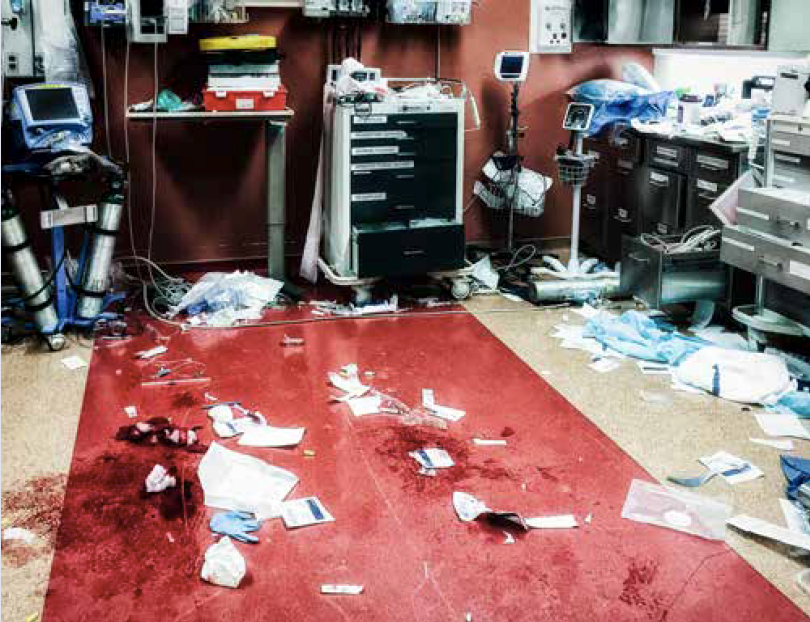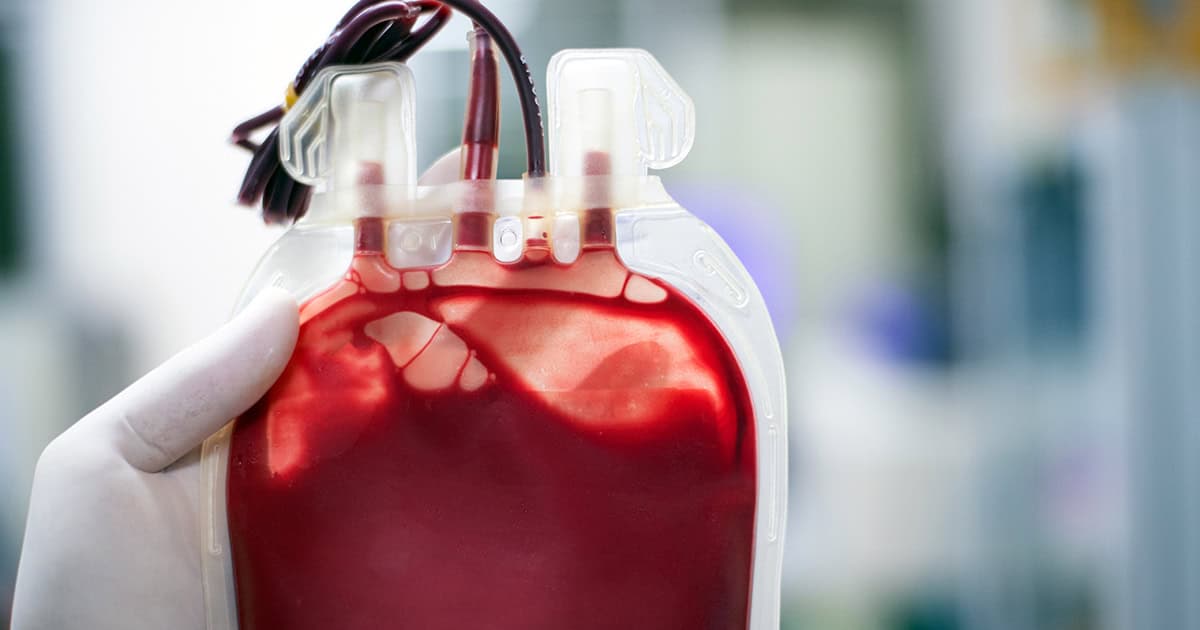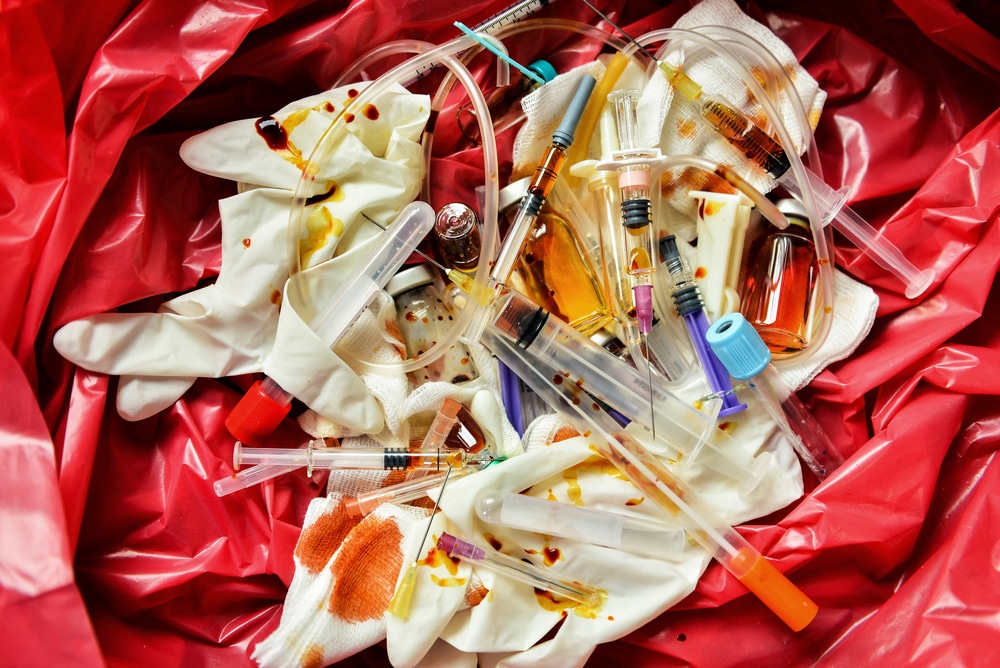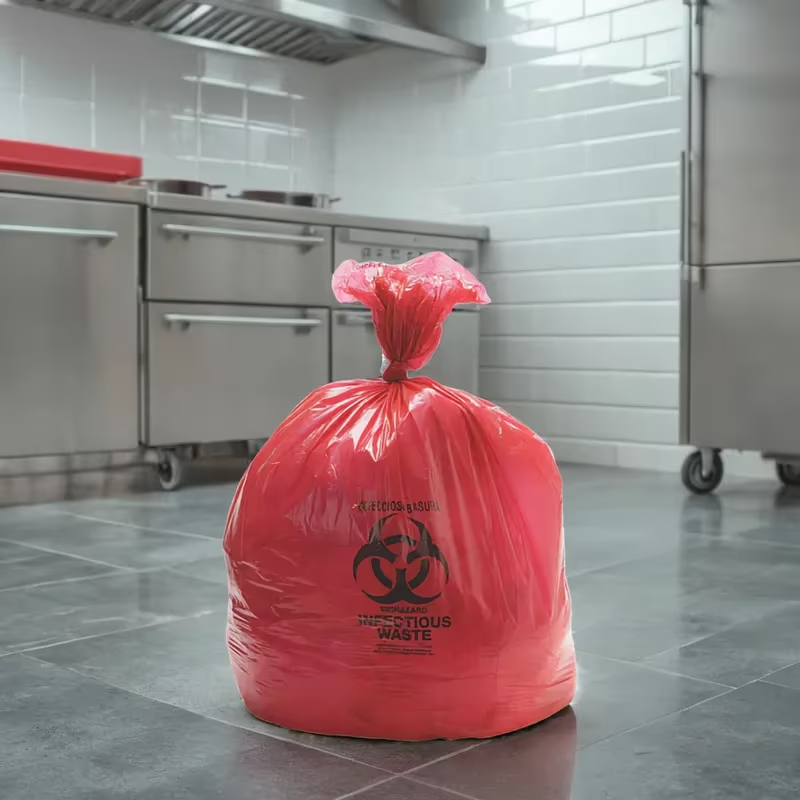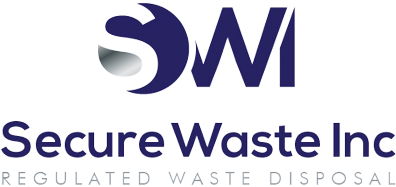Safe Biohazardous Waste Removal in Patient Rooms: A Regional Approach
Ensuring the safe and compliant removal of biohazardous waste from patient rooms is critical for every healthcare facility. Proper handling of medical waste in hospitals and clinics throughout Maryland, Virginia, and Washington, D.C. protects patients, staff, and the community from infection. It keeps your facility in line with regulations. This comprehensive guide will cover practical methods to manage and dispose of different types of biohazardous waste in patient care areas and explain how partnering with a local expert like Secure Waste can make the process easier and safer.
Topics we will cover:
- Understanding Biohazardous Waste in Healthcare Settings – What counts as biohazardous waste in patient rooms?
- Regulations Governing Biomedical Waste Disposal – Key federal guidelines and state-specific rules for MD, VA, and D.C.
- How Biohazardous Waste is Removed from Patient Rooms – Safe procedures for sharps and other infectious waste.
- Why Proper Disposal Matters – The risks of improper waste handling in hospitals.
- Tips to Improve Your Waste Disposal Practices—Best practices include segregation, handling techniques, and staff training.
- Secure Waste: Local Solutions for Safe Waste Management—How Secure Waste supports MD, VA, and D.C. healthcare facilities.
- Getting Started with Professional Waste Removal – Next steps and contact information for implementing safer waste disposal.
Understanding Biohazardous Waste in Healthcare Settings
“Biohazardous waste” refers to any material contaminated with blood, bodily fluids, or other potentially infectious substances. Many routine items in a patient room can become biohazards if exposed to infectious agents. This includes solids or liquids that could carry pathogens and pose a risk of spreading infection if not handled correctly. Essentially, any item that comes into contact with a patient’s blood or body fluids should be treated as biohazardous waste.
Common types of biohazardous waste in patient rooms include:
- Infectious Waste: Materials saturated with blood, blood products, or other body fluids. This can range from used bandages and gauze to contaminated equipment like IV lines and personal protective equipment (PPE) exposed to infectious material.
- Microbiological Waste: Laboratory cultures, used petri dishes, and stocks of infectious agents that might be handled in a healthcare setting. While these are more common in labs, patient isolation rooms (for example, with certain infections) might generate such waste.
- Pathological Waste: Human tissues, organs, or body parts removed during surgery or biopsy. In a hospital, any tissue or anatomical waste from patient procedures must be disposed of as biohazardous waste.
- Sharps: Needles, syringes, scalpels, broken glass vials, and other sharp objects that can pierce the skin. Sharps are hazardous because they can cause injury and are usually contaminated with blood or medication residue. They require special containment (rigid sharps containers) to prevent accidents.
- Other Contaminated Materials: This category can include items like genetic material (e.g., lab test samples containing recombinant DNA/RNA) or disposable tools and supplies that have been in contact with infectious agents.
Properly removing and disposing of all these materials from patient rooms is essential. It minimizes the risk of infection spread within the facility and ensures a safe environment for healthcare workers and patients. Staff should always carefully handle such waste, using gloves and other appropriate PPE, and place it immediately into designated biohazard containers. By understanding what qualifies as biohazardous waste, healthcare teams in our region can stay vigilant and prevent hazardous materials from ending up in the regular trash or causing harm.
Regulations Governing the Disposal of Biomedical Waste
Medical waste disposal in the United States is primarily regulated at the state level, and this holds for Maryland, Virginia, and D.C. Each of these jurisdictions has specific rules for how healthcare facilities must manage biohazardous waste. There is no single federal “medical waste law,” but several federal agencies provide guidance and oversight:
- EPA and State Agencies: The U.S. Environmental Protection Agency notes that state environmental and health departments primarily regulate medical waste. The federal Resource Conservation and Recovery Act (RCRA) sets “cradle-to-grave” rules for hazardous chemical waste, but state laws rather than RCRA govern most medical (biohazardous) waste. Maryland, Virginia, and D.C. have laws aligning with this model. For example, Maryland’s Department of the Environment (MDE) defines “special medical waste” (its term for biohazardous waste) and outlines strict requirements for its handling and disposal. Virginia’s Department of Environmental Quality (DEQ) enforces Regulated Medical Waste rules under state law (9VAC20-121), and the District of Columbia has medical waste regulations managed by its environmental authorities (D.C. Department of Energy & Environment), which closely follow federal guidelines. The bottom line is that healthcare facilities must follow state or district regulations when disposing of biohazard waste.
- CDC, OSHA, and FDA Guidelines: In addition to state laws, hospitals must heed guidelines from federal agencies. The Centers for Disease Control and Prevention (CDC) recommends infection control practices (for example, how to handle sharps and contaminated materials to prevent disease transmission). The Occupational Safety and Health Administration (OSHA) enforces the Bloodborne Pathogens Standard, which requires employers to protect workers from exposure to blood and infectious materials – this includes having proper sharps disposal and employee training in place. The Food and Drug Administration (FDA) plays a role, too, since it regulates medical devices like sharps containers (making sure they are safe and effective for use) and has clearance processes for those containers. These guidelines influence how biohazardous waste must be handled in healthcare settings.
Healthcare facility responsibilities: No matter the state, the generator of biohazardous waste (the hospital, clinic, lab, etc.) is ultimately responsible for managing it safely. Healthcare facilities in Maryland, Virginia, and D.C. must take several key steps to remain compliant with biomedical waste disposal rules:
- Segregation and Labeling: Waste should be separated into the correct containers at the point of use. For instance, sharps go into puncture-resistant sharps containers, infectious soft waste goes into red biohazard bags, and so on. Each container or bag should be clearly labeled (typically color-coded) with the universal biohazard symbol or appropriate wording to indicate its contents. Proper segregation ensures that each type of waste can be treated correctly and prevents the mixing of hazardous and non-hazardous waste.
- Proper Containers and Storage: Use only approved, sturdy containers for biohazardous materials. Sharps containers must be rigid, puncture-proof plastic, and have secure lids. Other biohazard waste should go into leak-proof bags or bins that won’t tear or spill. These containers should be kept in designated storage areas once removed from patient rooms, away from public access. Our region often has rules about how long medical waste can be stored on-site (for example, some regulations might limit storage to 30 or 60 days), so regular pickup is essential.
- Licensed Transport and Disposal: Healthcare facilities must ensure their biohazardous waste is transported off-site by a licensed medical waste removal service (Secure Waste) and taken to an authorized treatment/disposal facility. You cannot just throw medical waste out with regular trash; it needs to go to a facility equipped to treat it (for instance, an autoclave or incineration plant permitted for medical waste). Maryland, Virginia, and D.C. require medical waste haulers and facilities to have proper certification or permits. Using a licensed contractor also gives you the necessary manifests and documentation to track the waste “from cradle to grave,” which is a compliance requirement.
- Documentation and Compliance: Facilities should maintain records of waste manifests, employee training, and waste management plans. Should regulators ever inspect or audit the facility, having up-to-date documentation proves that you are handling biohazardous waste responsibly. Failing to comply with any regulation can result in hefty fines or legal penalties, so facility managers must stay informed about state-specific rules and ensure all staff follow established procedures.
Staying on top of these obligations might sound daunting. Still, it’s made easier by working with a knowledgeable waste management partner and fostering a safety culture in the facility. In the following sections, we’ll examine how biohazardous waste should be removed from patient rooms and what best practices hospitals can implement to improve safety and compliance.
How Is Biohazardous Waste Removed from the Patient’s Room?
Regarding day-to-day operations, how do hospitals safely get biohazardous waste out of patient rooms? The procedures can differ slightly depending on the type of waste – particularly between sharps (like needles) and other regulated medical waste (like contaminated gloves, dressings, or liquids). Below, we break down the process for each:
Removing Sharps Waste Safely
Sharps (any object that can cut or puncture skin) require extra caution. Needles, syringes, lancets, scalpels, broken glass, etc., must NEVER be thrown in a regular trash can. The risk of injury and infection is too high. Instead, healthcare staff should follow these steps for sharps in a patient room:
- Immediate placement in a sharps container: As soon as a sharp item is used, it should be immediately placed into an approved sharps disposal container. An FDA-cleared sharps container is a hard plastic, puncture-resistant, leak-proof container with a tight-fitting lid. These containers are usually red (or sometimes yellow) and are marked with a fill line and the biohazard symbol. By design, they prevent needles or blades from poking out and protect anyone handling the waste from injury. A sharps container within arm’s reach in every patient room or treatment area is vital so that used sharps go straight in without delay.
- Do not recap or manipulate needles: One of the golden rules in sharps safety is to avoid recapping needles or doing anything that could lead to an accidental stick. Used needles should go directly into the sharps container uncapped. Recapping or bending a needle can cause it to slip and jab your finger or cause aerosolization of contents. OSHA guidelines recommend using safety features (like needles with shielding mechanisms) and disposing of sharps promptly to eliminate these risks.
- Sealing and replacing containers at ¾ full: Sharps containers should never be overfilled. When a container is around three-quarters (¾) full, it’s time to seal it and replace it with a new one. Most sharps bins have a visible line or indicator for this fill level. Overfilling can lead to needles protruding or difficulty closing the lid, which is dangerous. A nurse or environmental services staff member should carefully seal the container (ensure the lid is locked) and remove it from the patient’s room. The sealed container is placed in the designated storage area for biohazardous waste until pickup. Immediately replacing it with an empty sharps container in the room ensures continuous availability.
- Removal by trained personnel: Typically, hospitals have protocols for who is responsible for retrieving full sharps containers from rooms (it could be nursing staff, environmental services, or a dedicated waste technician). That person will transport the sealed sharps containers to the facility’s secure medical waste storage area. They will follow all safety protocols during transport (wearing gloves, using carts if needed, etc.). From the storage area, your licensed medical waste hauler will collect the containers on a regular schedule for final treatment and disposal.
By following these practices, sharps are contained from the moment of use to final disposal, drastically reducing the chance of needlestick injuries in patient rooms and beyond.
Removing Other Regulated Medical Waste (Non-Sharps)
In addition to sharps, patient care generates plenty of other biohazardous waste. This includes soft contaminated waste (like bloody gauze, used gloves, isolation gowns, or disposable sheets) and liquid waste (like suction canisters filled with body fluids or lab specimens). The removal process for these wastes focuses on containment and preventing any leaks or exposure:
- Proper bags and containers: Soft infectious waste should be collected in sturdy biohazard bags. Most facilities use red bags (the universal color indicating biohazardous medical waste) that meet strength standards so they won’t rip underweight. These bags should be lined in medical waste bins or hampers in the patient room. When waste like dressings or PPE is generated, staff should directly place it into the red bag. Do not overfill the bag; it should be tied and removed when about two-thirds to three-quarters full or if it’s getting heavy. Double-bagging is generally unnecessary if the bags are good quality and not punctured, but a second bag can be used if a leak is observed. Sometimes rigid biohazard bins with lids are used for larger solid items that might tear a bag or to dispose of many items at once.
- Liquid waste handling: Liquid biohazardous waste (e.g., blood or body fluid drainage) is often collected in closed containers like suction canisters. To remove these safely, staff must ensure lids are secure to prevent spills. In some cases, solidifiers can be added to the liquid waste to turn it into a gel, making handling safer and meeting disposal requirements. According to many regulations, liquid wastes can be safely poured into a sanitary sewer (down a drain or toilet) IF they have been decontaminated (for instance, treated with a disinfectant). However, this depends on local law and hospital policy – often, liquid waste is handed off to the medical waste contractor for treatment. The key is to avoid splashes or exposure: wear eye protection and gloves when handling liquid containers, and transport them in secondary containment (like a tray or bin) in case of a leak.
- Securing and labeling: Just like with sharps, once a red bag is removed from the patient room, it should be securely tied off (and placed in a secondary container with a lid if required by your facility). All biohazard bags/containers must be labeled with the biohazard symbol or “Biohazard.” In practice, red bags are often pre-printed with this symbol. Rigid bins should have a sticker or sign. In Maryland and Virginia, for example, regulations stipulate proper labeling to warn anyone who encounters the container.
- Transport to storage: The collected waste from patient rooms should be promptly taken to the hospital’s biohazard storage room/area. Many hospitals do rounds to each room at set intervals to gather waste or remove bags immediately after treatments that generate a lot of garbage. Staff handling this should use carts or trolleys designed for medical waste to avoid hugging the bags (which risks injury or contamination). The storage area should be a secure, designated room (often refrigerated if stored for extended periods to minimize odor and decomposition). Here, the waste awaits pickup by the waste disposal service.
- Treatment and final disposal: Once Secure Waste (or your chosen medical waste hauler) collects the waste from your facility, it will be transported for treatment. Treatment methods vary: Autoclaving (steam sterilization) is commonly used for most biohazardous waste to kill pathogens, after which the sterilized material can be disposed of as regular solid waste (often in a landfill). Some waste, like pathological tissue or trace chemotherapy waste, may be incinerated at high temperatures to ensure destruction. Liquid wastes might be treated with chemical disinfectants or processed in specialized systems, and then the neutralized liquids can be discharged safely into the sanitary sewer system. A reputable waste management company will ensure that all waste is treated using a method approved by state law. They will also provide documentation (like a certificate of destruction or treatment) for your records.
Removing biohazardous waste from patient rooms involves containment, caution, and compliance at every step. Healthcare facilities can safely clear patient rooms of dangerous materials using the proper containers and procedures without exposing others to risk. Next, we’ll look at why all these precautions are so necessary by examining the potential consequences of improper disposal.
The Importance of Proper Biomedical Waste Disposal in Hospitals
Thinking of medical waste disposal as another housekeeping task might be tempting. Still, it is a critical part of patient and worker safety and public health. Improper disposal or mishandling of biohazardous waste can have serious repercussions:
- Infection and injury risks: The most immediate danger is that someone—whether a healthcare worker, a janitor, or a visitor—could be exposed to infectious pathogens. For example, a needle that wasn’t disposed of correctly could cause a needlestick injury, potentially transmitting viruses like HIV, Hepatitis B, or Hepatitis C. Even contaminated dressings or fluids carry bacteria and viruses that can infect anyone who comes into contact without protection. Hospitals work hard to control infections within their walls; sloppy waste practices can undermine those infection control efforts by creating new routes for disease transmission.
- Environmental contamination: Biohazardous waste that isn’t treated correctly can also harm the environment. If infectious waste is tossed in with general trash and ends up in a municipal landfill, there’s a risk of it leaching into soil or water or causing disease in wildlife. Incinerating medical waste in an uncontrolled way could release toxic pollutants. Environmental health is closely connected to public health, so safe disposal is essential to prevent broader community exposure. Our region has clear rules to avoid dumping medical waste for this very reason. For instance, D.C. law prohibits disposing of medical waste in regular trash bins or public areas. High-profile cases of medical waste washing up on beaches in the past have led to strict enforcement to protect the public.
- Regulatory and legal consequences: Apart from the human and environmental toll, there’s a compliance aspect: healthcare facilities face severe penalties if they violate medical waste laws. Maryland, Virginia, and D.C. Regulators can impose fines, revoke permits, or even pursue criminal charges for willful negligence in waste handling. Moreover, if a hospital causes an outbreak or injury due to improper waste management, it could face lawsuits and severe reputational damage. In short, no facility wants to be in the news for a medical waste mishap.
Given these stakes, hospitals and clinics should prioritize proper biomedical waste disposal. Fortunately, the risks are entirely preventable by following best practices and guidelines. Here are a few preventive measures and protocols that underscore the importance of doing things right:
Preventive Measures and Best Practices
Healthcare facilities must implement strict waste management protocols to avoid the abovementioned dangers and ensure all staff are on board. Some key preventive measures include:
- Clear procedures and training: Every facility should have a written Biomedical Waste Management Plan that outlines how to handle each type of waste, from generation to storage to pickup. This plan is only effective if staff are trained on it regularly. Nurses, doctors, cleaning staff – everyone who may generate or handle biohazardous waste – should receive training on identifying the correct waste streams, using the proper containers, and what to do if an accident (like a spill or needle stick) occurs. Regular training (for example, annual refreshers required by OSHA for bloodborne pathogens) will keep employees knowledgeable and vigilant.
- Use of protective equipment: Those handling biohazardous waste should always use appropriate personal protective equipment (PPE). Gloves are a minimum when touching any biohazard bag or sharps container. Face shields, goggles, and gowns may be necessary if there’s a risk of splashing (like when cleaning up a large blood spill or transporting an open liquid container). PPE acts as the last line of defense in case something goes wrong with the primary containment.
- Segregation at the source: We mentioned it before, but it bears repeating as a preventive strategy: segregating waste correctly at the point of use is one of the simplest and most effective ways to manage medical waste safely. When staff consistently put waste in the right place (sharps in sharps boxes, infectious in red bags, uncontaminated trash in regular bins), it prevents scenarios like someone accidentally rummaging through a trash bag that contains a mix of needles and papers. Good segregation also reduces disposal costs and environmental impact by ensuring only truly biohazardous materials are treated as such.
- Routine audits and monitoring: It’s a good practice for hospitals to conduct periodic audits of their waste disposal processes. This might involve checking random trash bags to ensure no regulated waste ends up there, inspecting biohazard bins to see if they contain only appropriate items, and verifying that labels and dates are correctly marked. Audits can reveal problems (for example, a specific department might not segregate well, or containers might be overfilled) so that management can address them through retraining or process changes. Many facilities also assign an Infection Control officer or Environmental Services manager to oversee waste compliance, which helps keep the focus on safety.
- Preparedness for spills or incidents: Despite all precautions, accidents can happen – a bag could rip, or a container might tip over. Facilities should have spill cleanup kits and protocols readily available. Staff should know how to isolate an area, clean and disinfect any biohazard spills, and report and document the incident. Quick response to a minor incident can prevent it from becoming a bigger problem (like someone slipping on a spilled fluid or tracking it to other areas).
By prioritizing these measures, healthcare providers create a safer environment and reinforce the importance of handling biomedical waste. The payoff is significant: lower infection rates, a healthier workplace, and peace of mind that your facility is compliant and responsible.
How to Improve Your Biomedical Waste Disposal Practices
Even if your facility already has a waste management program, there’s always room to enhance safety, efficiency, and compliance. Here are some actionable ways to improve your biomedical waste disposal methods in day-to-day operations:
- Optimize Waste Segregation: Review how waste is being separated in each department. Are there enough designated containers in convenient locations? If you notice regular trash or recyclables ending up in red bags (or vice versa), you might need to re-train staff or provide more containers with clear labels. Proper segregation ensures each type of waste gets the correct treatment and reduces risk and cost. It can be helpful to post simple color-coded charts or signage in utility rooms as reminders of what goes into each container (for example, red bag for biohazard, yellow container for chemo waste, blue bin for recyclables, etc., as applicable). Keeping non-hazardous waste out of the biohazard stream will also avoid unnecessary volume (and expense) in your medical waste pickups.
- Improve Handling Techniques: Emphasize safe handling habits among staff. A key example is never recapping needles after use – used sharps go straight into the container without manipulation, as this prevents accidental sticks (OSHA has made this a standard in the Bloodborne Pathogens rules). Similarly, staff should avoid compressing bags with their hands or feet to make “more room” – doing so could push a sharp object through or cause a splash. Ensure that all biohazard waste containers are sealed properly before removing them from the room. Using carts to transport waste instead of carrying it against the body is another simple improvement. Little changes like these go a long way in reducing exposure incidents. Additionally, make sure the schedule for waste removal from patient areas is frequent enough that waste doesn’t accumulate longer than it should. Increasing the pickup frequency (even internally from rooms to storage) can improve safety and reduce odors or nuisance for patients.
- Regular Staff Training & Refreshers: The best procedures on paper won’t help if staff aren’t following them. Incorporate medical waste handling into your orientation for new hires and do annual refresher training for all employees who deal with waste. Keep everyone up-to-date on any regulation changes in Maryland, Virginia, or D.C. that might affect your protocols. Training doesn’t have to be boring – some facilities use quizzes, toolbox talks, or even hands-on practice with spill drills to keep staff engaged. When people understand why these practices matter (for example, showing statistics about needlestick injuries or citing real incidents), they are more likely to comply consistently. Consider also involving your medical waste disposal partner (like Secure Waste) in training sessions – we often help educate staff on proper packaging, what can and can’t go into specific containers, etc., based on our expertise in the field.
- Partner with a Professional Waste Management Service: One of the most effective ways to improve your biomedical waste program is to work with a reliable medical waste disposal company. A specialized provider such as Secure Waste can assess your facility’s needs and help optimize container placement, pickup schedules, and compliance with local regulations. We provide the correct containers (for sharps, pharmaceuticals, biohazard waste, etc.), handle the transportation and treatment of the waste, and keep you updated on regulatory requirements. By partnering with experts, you ensure that no aspect of your waste management is overlooked. It also takes a massive burden off your staff, allowing them to focus on patient care while we handle the complexities of waste disposal. If you feel unsure about any part of your waste process, contacting a professional service can bring immediate improvements and peace of mind.
Healthcare facilities can create a more robust and efficient waste management system by implementing these improvements. Over time, you’ll likely see fewer accidents, smoother audits/inspections, and possibly even cost savings from better waste segregation. It’s a win-win for safety and operations.
Secure Waste: Your Local Partner for Safe Biohazardous Waste Management
Regarding biohazardous waste disposal, having the right partner in your corner makes all the difference. Secure Waste, Inc. is proud to be a dedicated provider of medical waste management services exclusively for Maryland, Virginia, and Washington, D.C. healthcare facilities. We understand the unique regulatory landscape of our region and the challenges that hospitals and clinics face in managing biomedical waste safely. Here’s how Secure Waste can support your facility:
- Decades of Experience and Trust: With over 25 years of experience in the medical waste industry, Secure Waste has become a trusted choice for hospitals, surgery centers, laboratories, doctor’s offices, and other healthcare providers across Maryland, Virginia, and D.C. Our long-standing presence in the region means we have in-depth knowledge of state and local regulations – from Maryland’s “special medical waste” rules to Virginia’s RMW management standards – and we help our clients stay fully compliant. We’ve built our reputation on reliability and professionalism, which is why so many facilities consider us a preferred partner for biohazardous waste disposal and sharps management.
- Comprehensive Waste Solutions: Secure Waste offers end-to-end solutions for all your regulated waste streams. We provide appropriate containers and supplies for your facility – including FDA-approved sharps containers, red bags, and secure bins – all designed to meet safety standards (puncture-resistant, leak-proof, properly labeled). Our team will work with you to ensure these containers are placed optimally in your patient rooms and departments to facilitate easy compliance for your staff. When containers are full, our trained technicians will collect them on a schedule that suits your needs (we offer regular pickups and on-call services). We transport waste in fully licensed and insured vehicles, adhering strictly to DOT guidelines and state transport regulations for medical waste.
- Safe Treatment and Disposal: After pickup, Secure Waste ensures your biohazardous waste is treated and disposed of in an environmentally responsible and legal manner. We utilize state-of-the-art treatment technologies such as steam sterilization (autoclaving) to neutralize infectious waste, and we partner with permitted facilities for any required incineration (for pathological or pharmaceutical wastes). Our treatment processes meet or exceed regulatory requirements to destroy pathogens and render waste non-infectious. For example, our autoclave systems achieve high temperatures and pressure to effectively sterilize waste before compacting and sending it for final disposal as regular solid waste. By using modern treatment methods, we protect public health and reduce medical waste’s environmental footprint. Many of our containers are reusable (after thorough disinfection), which helps minimize single-use plastic waste and aligns with sustainability goals.
- Regulatory Compliance and Documentation: One of the most significant benefits of working with Secure Waste is peace of mind regarding compliance. We stay on top of the latest laws in our three jurisdictions. Our team assists clients with proper labeling, manifesting, and record-keeping for their waste. Each pickup comes with a manifest tracking the waste from your facility to the treatment/disposal site – providing that “cradle-to-grave” documentation required by regulators. We can also help you with annual reports or any paperwork needed for state agencies. In the event of an audit or inspection, having Secure Waste as your vendor means you’ll have organized records and proof that you’ve been managing your waste correctly and responsibly. Partnering with us is a safeguard against compliance slip-ups because we prioritize ensuring everything is done by the book.
- Personalized Service and Support: Unlike giant national companies, secure Waste is a local business. Our customers are also our neighbors. This means we can offer a level of personalized service that big corporations often can’t match. When you call Secure Waste, you’ll talk to a knowledgeable representative who understands your area and can address your needs promptly. Need an extra pickup due to an unexpected surge in patients? Do you have a question about disposing of a unique waste stream? We respond quickly and find solutions because we are in the community. Our staff is friendly, professional, and dedicated to helping your facility maintain the highest safety standards. We also provide training resources for your employees – we can schedule on-site educational sessions to ensure your team knows how to segregate and package waste correctly. Secure Waste strives to be a vendor and partner in your infection control and environmental safety efforts.
By choosing Secure Waste, healthcare facilities in Maryland, Virginia, and D.C. get a reliable partner that eliminates medical waste management hassle. We handle the dirty work (quite literally) so that your team can focus on what they do best: providing excellent patient care. Our commitment to safety, compliance, and customer service means you can trust that your biohazardous waste is managed correctly at every step.
Get Started with Safe Biohazardous Waste Removal Today
Effective biohazardous waste management is not just about following the law – it’s about protecting lives and promoting a healthy environment. By understanding the types of biohazardous waste found in patient rooms, complying with regulations, and implementing best practices for handling and disposal, healthcare facilities can significantly reduce risks and create a safer space for everyone. Whether using the proper sharps containers, segregating waste correctly, training staff, or partnering with a professional service, every step you take improves your facility’s safety profile and compliance record.
If you’re a healthcare provider in Maryland, Virginia, or Washington, D.C., looking to strengthen your biomedical waste disposal program, Secure Waste is here to help. We offer the regional expertise and hands-on support you need for compliant, worry-free biohazardous waste removal. Don’t leave your patient room to clean up to chance. Let our team assist you in setting up the proper waste management solution tailored to your facility.
You can contact Secure Waste today to learn more or to get a free, no-obligation quote for service. You can reach us at 877-633-7328 or visit our website at www.securewaste.net. We’ll gladly discuss your current waste disposal practices and show you how we can enhance safety and efficiency. Take the next step toward a safer healthcare environment – with Secure Waste as your partner in biohazard waste management, you can be confident that your patient rooms (and beyond) will remain clean, compliant, and secure from biohazards. Let’s work together to uphold our region’s highest safety and compliance standards for medical waste disposal. Your staff, your patients, and our community deserve nothing less.
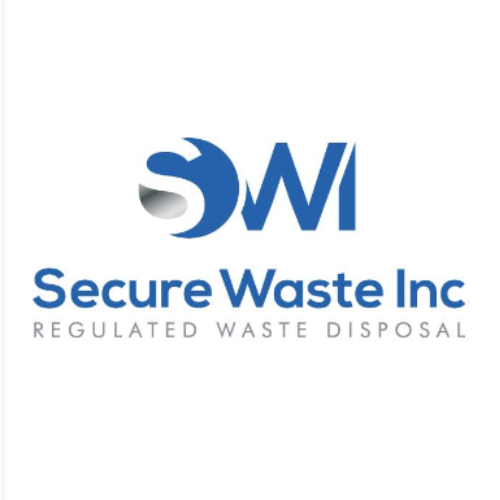
Expert Medical Waste Management: With over 25 years of industry experience, Secure Waste is a trusted local leader in hazardous and biohazardous waste disposal across Maryland, Virginia, and Washington, D.C. Specializing in medical waste management, sharps needle disposal, and biohazard waste removal, the company ensures full compliance with federal, state, and local regulations while prioritizing environmental sustainability.
The company also offers additional services, including secure document shredding and sharps container sales, providing comprehensive solutions for healthcare facilities and businesses. Our cost-effective services help clients maintain regulatory compliance without unexpected costs.
With a commitment to customer satisfaction, Secure Waste offers tailored waste management plans that align with industry best practices. Their team of experts provides reliable, timely, and compliant services, making them the preferred choice for medical waste disposal. For a free waste quote or more information, visit www.securewaste.net
